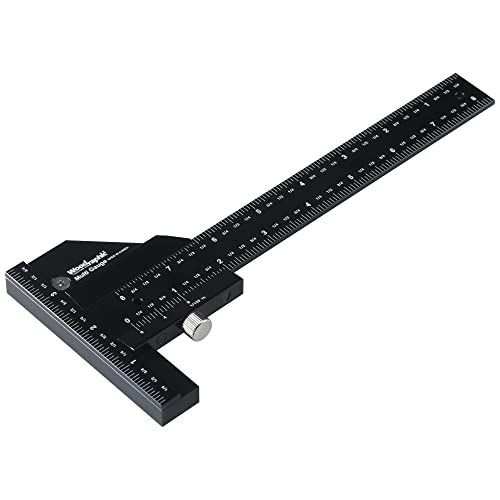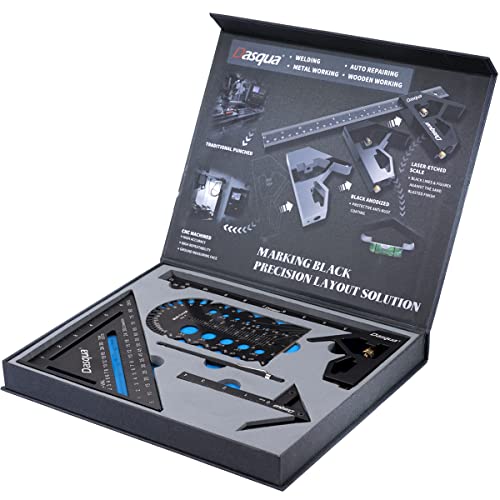






A carpenter’s pencil is an essential tool for any woodworker or carpenter. Its flat shape and thick lead make it perfect for marking precise lines and angles on wood surfaces. However, like any other pencil, it requires sharpening from time to time to maintain its effectiveness.
Sharpening a carpenter’s pencil may seem like a simple task, but it requires some specific techniques to achieve the best results. This article will guide you through the process of sharpening your carpenter’s pencil, ensuring that it is always ready for your woodworking projects.
The first step in sharpening a carpenter’s pencil is to prepare the necessary tools. You will need a utility knife with a sharp blade, a sandpaper block, and a flat work surface.
To begin, hold the pencil firmly in one hand, and use the utility knife to shave off the wood casing. Make sure to remove any excess wood to expose the lead. Be careful not to cut yourself while doing this.
Next, take the sandpaper block and rub it gently against the exposed lead. This will help you shape the lead to a point, making it easier to use for marking. Rotate the pencil as you sand it to ensure an even point.
Finally, clean the pencil with a soft cloth or tissue to remove any wood shavings or dust. Your carpenter’s pencil is now properly sharpened and ready to be used in your woodworking projects.
To maintain the sharpness of your carpenter’s pencil, remember to sharpen it regularly. A sharp pencil will provide you with more accurate markings, making your woodworking tasks easier and more precise.
By following these simple steps, you can ensure that your carpenter’s pencil is always sharp and ready for use. So, the next time you have a woodworking project, you can confidently rely on your properly sharpened carpenter’s pencil to make accurate and precise markings.
Why Sharpening Carpenters Pencils is Important
Sharpening carpenters pencils is an essential task for any carpenter. A sharp pencil allows for precision marking and measurement, which is crucial in the accuracy of carpentry work. Here are a few reasons why sharpening carpenters pencils should be a regular practice:
1. Accuracy
Sharpening a carpenter’s pencil ensures a fine and sharp point, which enables a carpenter to make accurate and precise markings on wood or other materials. Accurate markings are vital for measuring, cutting, and fitting various components during carpentry projects.
2. Efficiency
Using a dull pencil can be frustrating and time-consuming. A sharp carpenter’s pencil allows for quick and efficient marking, saving time and effort during projects. It enables carpenters to work at a faster pace without compromising accuracy.
3. Easy to See
A sharp pencil leaves a clean and visible line, making it easier for carpenters to see and follow their markings. This visibility reduces the chances of mistakes or inaccuracies in measurements and cuts, resulting in better quality work.
4. Professional Appearance
Sharp pencils create neat and professional-looking markings, which can be especially important for carpenters working on high-end or precision projects. A well-maintained pencil reflects attention to detail and professionalism in their workmanship.
To maintain the sharpness of carpenters pencils, it is important to use a dedicated pencil sharpener or a utility knife to shape the lead to a fine point. Regularly inspecting and sharpening pencils ensures that carpenters can work with precision and accuracy, leading to superior carpentry outcomes.
| Benefits of sharpening carpenters pencils: |
|---|
| 1. Improved accuracy in measurements and cuts |
| 2. Increased efficiency and productivity |
| 3. Enhanced visibility of markings |
| 4. Professional appearance |
Benefits of Having a Sharp Carpenters Pencil
Having a sharp carpenter’s pencil is essential for any woodworker or carpenter. Here are some of the benefits of using a sharp carpenter’s pencil:
Accurate Markings: A sharp pencil allows for precise and accurate markings on the wood. This is crucial for making accurate measurements and cuts, ensuring that the finished product is of high quality.
Improved Efficiency: When you have a sharp pencil, it is easier to make markings quickly and efficiently. With a dull or blunt pencil, you may need to apply more pressure, resulting in inaccurate lines and wasting time.
Better Control: A sharp pencil provides better control and grip, allowing you to easily maneuver it on the wood surface. This helps in creating clean and neat lines, providing clarity when working on intricate designs or measurements.
Reduced Risk of Damaging the Wood: A dull pencil can drag or tear the wood fibers, leading to damage or splintering. Using a sharp pencil minimizes this risk, ensuring that your workpiece remains intact and in good condition.
Enhanced Safety: A sharp pencil is less likely to slip or skip on the surface, reducing the risk of accidents. It allows you to have better control over the pencil, ensuring that your hands and fingers are not accidentally injured.
Easier to Sharpen: When you have a sharp carpenter’s pencil, it is easier to maintain its sharpness. Sharpening a pencil is a quick and simple task, which can be done using a utility knife or a pencil sharpener.
Overall, having a sharp carpenter’s pencil is essential for achieving accuracy, efficiency, and safety in woodworking and carpentry projects. It is a small tool that can make a big difference in the quality of your work.
Tools Needed for Sharpening
When it comes to sharpening a carpenter’s pencil, it’s important to have the right tools on hand. Here are the essential tools you will need:
| Tool | Description |
|---|---|
| Pencil sharpener | A quality pencil sharpener specifically designed for carpenter’s pencils is the most important tool you will need. Make sure it has a durable blade that can handle the tough graphite of the pencil. |
| Sandpaper | Having a fine-grit sandpaper can be helpful to smooth out any rough edges or unevenness after sharpening the pencil. |
| Knife | In case the pencil sharpener doesn’t give you the desired sharpness, having a sharp knife can be handy. Use it carefully and with precision to carve the tip to your liking. |
| Pencil extender | If you have a carpenter’s pencil that has become too short to hold comfortably, a pencil extender can be a useful tool to lengthen its lifespan. |
| Brush | Having a small brush, like a toothbrush, can help you clean off any debris or shavings that may accumulate during the sharpening process. |
With these tools at your disposal, you can easily and effectively sharpen your carpenter’s pencil to ensure precision and accuracy in your woodworking projects.
Step-by-Step Guide to Sharpening a Carpenter’s Pencil
Sharpening a carpenter’s pencil is an essential skill for anyone working in construction or woodworking. A sharp pencil allows for accurate and precise marking, which is crucial for ensuring the quality of your work.
What You’ll Need
Before you begin, gather the following materials:
- A carpenter’s pencil
- A utility knife or a pencil sharpener specifically designed for carpenter’s pencils
- A sandpaper block or file (optional)
The Sharpening Process
Follow these step-by-step instructions to sharpen your carpenter’s pencil:
- Hold the pencil firmly in one hand, using your thumb and index finger to grip it near the tip.
- If you’re using a utility knife, position the blade at a slight angle to the pencil’s tip. Carefully shave off the wood, rotating the pencil as you go. Take care to remove only a thin layer of wood at a time, as excessive shaving can weaken the pencil.
- If you’re using a carpenter’s pencil sharpener, insert the pencil into the sharpener and twist it clockwise. Keep rotating until you achieve a sharp, pointed tip. Be sure to follow the manufacturer’s instructions for your specific sharpener.
- If the pencil’s lead feels dull, you can use a sandpaper block or file to expose a fresh tip. Gently rub the pencil against the sandpaper or file, rotating it to ensure an even sharpening. Take care not to apply too much pressure, as this can break the lead.
- Once you’ve achieved a sharp point, use a clean cloth or your thumb to brush away any wood shavings or debris from the tip of the pencil.
Remember to sharpen your carpenter’s pencil regularly to maintain its performance. A sharp pencil will make your work easier and more accurate, ultimately leading to better results.
Now that you know how to sharpen a carpenter’s pencil, you can confidently tackle your next construction or woodworking project with precision and ease!
Step 1: Choose the Right Sharpener
Sharpening a carpenter’s pencil can be tricky if you don’t have the right sharpener. Choosing the right sharpener for your carpenter’s pencil is essential for achieving a fine, precise point that will allow you to draw accurate lines and markings.
When it comes to sharpeners, there are a few options available:
1. Knife Sharpener
A knife sharpener is a versatile option that can be used to sharpen carpenter’s pencils. It works by grinding away the wood, exposing the graphite core of the pencil. This method requires some skill and caution to avoid cutting yourself or damaging the pencil.
2. Sandpaper
Using sandpaper is another great way to sharpen a carpenter’s pencil. Simply fold a piece of fine-grit sandpaper and use it to shape the pencil’s tip. This method is more time-consuming but allows for greater control over the sharpening process.
3. Mechanical Sharpener
If you prefer a more convenient and faster option, a mechanical sharpener designed specifically for carpenter’s pencils is a great choice. These sharpeners are easy to use and provide consistent results. They often have two holes, one for a standard pencil and another for a carpenter’s pencil.
Before choosing a sharpener, consider the type of carpenter’s pencil you have. Some sharpeners may be better suited for certain pencil shapes and sizes. It’s also a good idea to read reviews and check for recommendations from other carpenters to ensure you are getting a quality sharpener.
Once you have chosen the right sharpener, you can move on to the next steps of sharpening your carpenter’s pencil and start using it for your woodworking or construction projects.






